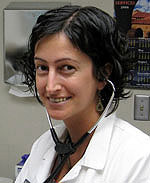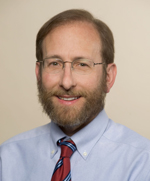October 5, 2009 - By Bruce Goldman

Nayer Khazeni
In a city the size of New York, starting a vaccination campaign a few weeks earlier could save almost 600 lives and over $150 million, according to a study by scientists at the Stanford University School of Medicine.
The study, published online Oct. 6 in the Annals of Internal Medicine, modeled a pandemic in a hypothetical urban area with a population and demographic characteristics mirroring New York City’s.
It concluded that under a very broad range of assumptions, vaccinating this October would save more money and lives than in November, and that vaccinating at either time was better than no campaign at all. An October campaign would avert 2,051 deaths and save $469 million, while a November campaign would prevent 1,468 deaths and save $302 million relative to doing nothing.
“To put it simply, the most cost-saving and life-saving strategy is to vaccinate as many people as possible as soon as possible,” said the study’s first author, Nayer Khazeni, MD, an instructor of medicine in pulmonary and critical care. She is also an associate at Stanford’s Center for Health Policy and Center for Primary Care and Outcomes Research.
Citing New York City’s 1976 mass-vaccination program against swine flu, the investigators presumed that a substantial fraction of the city’s population could be reached in a 10-day campaign. Their sophisticated mathematical model incorporated numerous alternative assumptions regarding the new viral strain’s lethality and transmission rate, the vaccine’s effectiveness and side-effect profile and the likelihood that people would limit their social contacts as cases multiplied.
Public health officials have noted that it may not be possible to provide H1N1 vaccine on a mass scale in October. Earlier in the summer, up to 120 million doses of vaccine were expected to be ready in mid-October, enough to inoculate 40 percent of the U.S. population. Although the projected number of doses available by then has been scaled back to 45 million, enough for 15 percent of the U.S population, the study makes a compelling case for the benefits of vaccinating sooner rather than later.

Douglas Owens
Avoiding hospitalizations, for instance, provides a huge financial payoff, according to the study’s senior author Douglas Owens, MD, senior investigator at the Veterans Affairs Palo Alto Health Care System and professor of medicine and of health research and policy at the medical school. “A two-week stay in an intensive care unit could cost well over $50,000,” said Owens. “You can vaccinate a lot of people for that much.”
To date, H1N1 vaccines appear to have no serious side effects. But even when the researchers programmed their mathematical model with an assumption of substantial vaccine side effects, they found that far more lives and dollars would be saved than lost by a mass-vaccination campaign. For example, under the conservative assumption that the H1N1 vaccine’s safety profile would closely resemble that of the one used in the national swine-flu vaccination campaign of 1976, side effects would cause only two deaths in a city the size of New York City if 40 percent of the population were vaccinated. “That’s about 0.1 percent of the lives that would be saved,” Khazeni noted. “And even if vaccine side effects occurred far more often, many lives would still be saved by the campaign for every life lost due to side effects.”
ompelling case for the benefits of vaccinating sooner rather than later.

David Hutton
The Stanford investigators’ mathematical model—developed by co-author David Hutton, a graduate student in management science and engineering under Owens’ direction—can be used to look at other scenarios that might become relevant in the future. For example, a new vaccination strategy would be needed to cope with a pandemic caused by the H5N1 strain of influenza, commonly referred to as avian flu. That extremely virulent strain was, until the onset of the H1N1 pandemic early this year, the primary concern of public-health authorities anticipating an influenza pandemic. All it would take to ignite a dangerous pandemic is a random mutation that substantially increased H5N1’s transmissibility among humans.
A hypothetical vaccination campaign targeting the H5N1 viral strain is the subject of a second study, also undertaken by Khazeni and Owens and their Stanford colleagues, appearing simultaneously in the same journal. This study models the efficacy of an H5N1-directed public-health campaign, once again in a municipality resembling New York City, and examines the extensive stockpiling of vaccines and antiviral drugs (such as Tamiflu and Relenza) and their widespread distribution for preventive use at the onset of a local outbreak.
Unlike the H1N1 vaccine, studies show, a vaccine targeting the H5N1 strain would require two vaccine doses and would need an immune response-boosting substance called an adjuvant in order to induce strong human immune responses. The adjuvant would also lower the required individual dose size by as much as 45-fold, thereby multiplying total available doses by that amount.
ompelling case for the benefits of vaccinating sooner rather than later.

Alan Garber
Supplies of adjuvant and antivirals in the federal government’s Strategic National Stockpile should be expanded, Khazeni said. Those stockpiles would not only be useful against H5N1, but could also be directed toward use against other influenza strains with pandemic potential that may arise at any time.
Added Owens: “Just because we’ve had H1N1 doesn’t mean we won’t have something else.”
Funding for the study was provided by the Agency for Healthcare Research and Quality, the National Institute on Drug Abuse, the Department of Veterans Affairs and Stanford University. Its other Stanford co-author is Alan Garber, MD, PhD, staff physician at the Veteran’s Affairs Palo Alto Health Care System and the Henry J. Kaiser Jr. professor and director of the Center for Health Policy and the Center for Primary Care and Outcomes Research. A researcher at Weill Cornell Medical College in New York was the other co-author.
About Stanford Medicine
Stanford Medicine is an integrated academic health system comprising the Stanford School of Medicine and adult and pediatric health care delivery systems. Together, they harness the full potential of biomedicine through collaborative research, education and clinical care for patients. For more information, please visit med.stanford.edu.